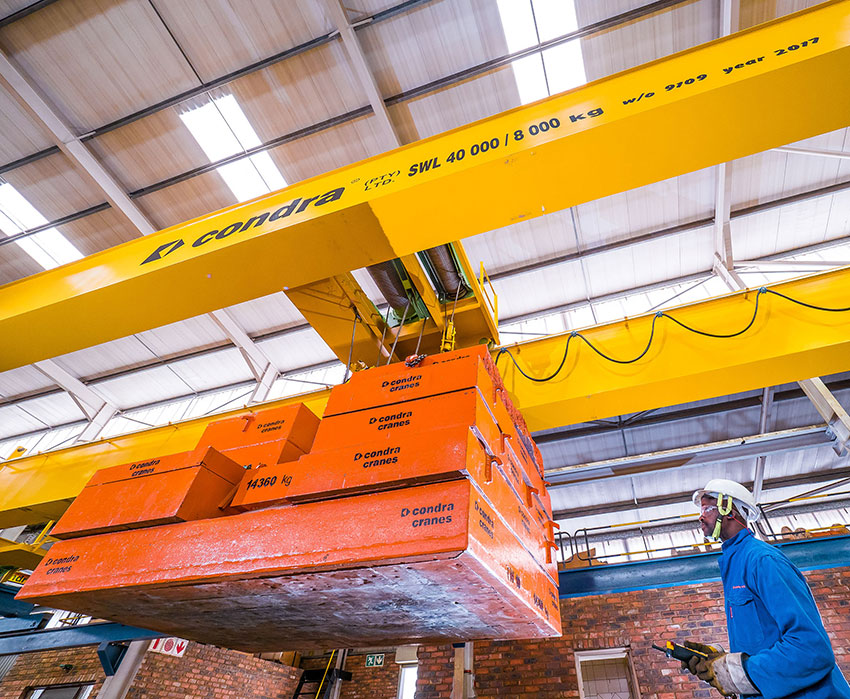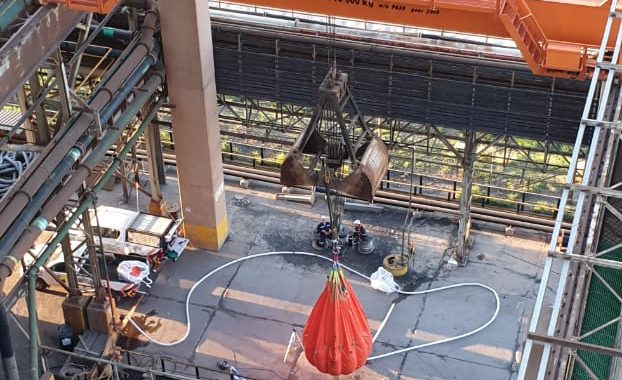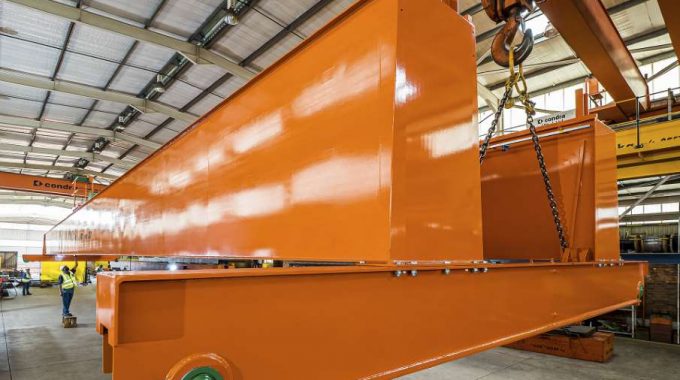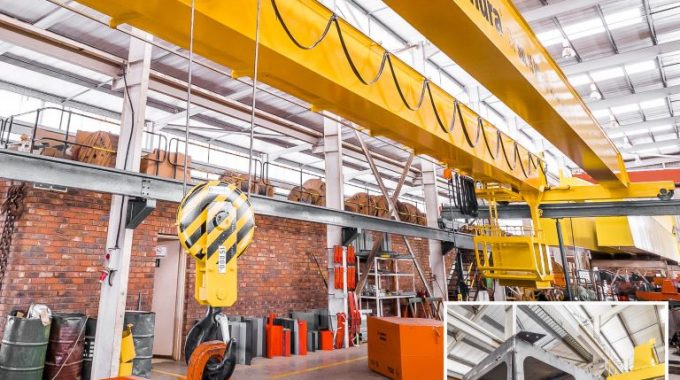COPPER TWINS
Thirty years’ reliable duty in a corrosive environment has won for Condra a repeat order from Lonmin Platinum for an overhead tankhouse crane to replace an identical machine delivered three decades ago.
The original crane was installed in 1990 at Lonmin’s Middelkraal Farm refinery outside Marikana, North West Province, South Africa, where it lifts and positions copper plates and slabs within the acid tanks used during the electrolytic refining process.
During this final phase, anodic copper slabs with a 99 percent purity attained during three prior processes are suspended by the crane in large tanks filled with an electrolyte solution of copper sulphate and sulphuric acid. Small, thin sheets of pure cathodic copper are then positioned between these anodes and an electric current applied. Copper ions leave the anodic slabs and move through the electrolyte to place themselves on the cathodic sheets, which after time become thick copper plates of 99,99 percent purity, ready for removal by the tankhouse crane for rinsing and despatch to factories that produce copper products.
Lonmin’s double-girder electric overhead travelling crane has a span of 19,9 metres, a capacity of 5 tons, a lifting height of 7,7 metres and two lifting speeds of 2 and 8 metres per minute.
Long-travel speed over the 42 metres of the tankhouse is 80 metres per minute.
Condra has delivered to other refineries tankhouse cranes with long-travel speeds as high as 140 metres per minute, more than three times the speed of a standard crane and about as fast as an average person’s jogging speed.
“To cater for a possible customer need for higher speeds in the future, we have included in Lonmin’s new crane provision for an easy upgrade to frequency drives,” explained Condra’s managing director Marc Kleiner.
 “Condra is currently investing in improved digital loadcells to further improve reliability across our tankhouse line in general, even though the reliability of the Marikana crane was well proven over a period of three decades,” he said.
Lonmin’s new tankhouse crane will incorporate features from Condra’s design library that move it beyond the company’s current generation of tankhouse cranes.
These include four LED girder downlights to illuminate the work area, remote crane control with a pendant back-up, an electrical control panel fitted with acid filtration ventilation to cater for the corrosive tankhouse environment, and a special paint finish for the same reason.
Quality control will include inspection and certification at defined stages of manufacture, and there will be magnetic particle inspection of the welding seams to ensure airtight girders and the avoidance of corrosion on the internal faces.
Ordered in April, the crane will be delivered before the end of August.
“Condra is currently investing in improved digital loadcells to further improve reliability across our tankhouse line in general, even though the reliability of the Marikana crane was well proven over a period of three decades,” he said.
Lonmin’s new tankhouse crane will incorporate features from Condra’s design library that move it beyond the company’s current generation of tankhouse cranes.
These include four LED girder downlights to illuminate the work area, remote crane control with a pendant back-up, an electrical control panel fitted with acid filtration ventilation to cater for the corrosive tankhouse environment, and a special paint finish for the same reason.
Quality control will include inspection and certification at defined stages of manufacture, and there will be magnetic particle inspection of the welding seams to ensure airtight girders and the avoidance of corrosion on the internal faces.
Ordered in April, the crane will be delivered before the end of August.

A typical Condra double-girder electric overhead travelling crane undergoing testing at the company’s Johannesburg factory.


